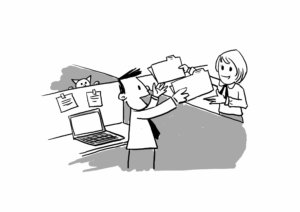What is the secret to success in business? That’s easy! It’s how well you know the competition.
Alright, maybe this is a slightly over-simplified perspective, but it always surprises me how many companies work with a primarily internal focus.
I have written many posts about knowing your customers, such as “Why Customers Are The Answer To All Your Problems (If You Ask the Right Questions).” Watching and listening to them in order to fully understand their rational needs and emotional desires is a great – and free! – way to start.
But today I would like to speak about doing exactly the same thing for your competitors. If you are going to succeed in attracting their customers away from their products and services, then it would make sense to know them as well as you do your own.
Here’s a simple three-step process to do so.
Encourage employees to use competitive products & services
 In most organisations today, using competitive products is still frowned upon; after all, we make the best don’t we, so why use those of other companies?
In most organisations today, using competitive products is still frowned upon; after all, we make the best don’t we, so why use those of other companies?
However to challenge and beat the competition you have to intimately know what you are up against. Regular contact with competitive products will encourage your employees to evaluate your own offering. They will also be encouraged to suggest competitors’ strengths and weaknesses that were perhaps not evident before. It will also ensure that you are rapidly aware of any improvements made by the competition. You won’t get left behind and find yourself suffering from declining sales due to competitive improvements of which you are unaware.
This intimacy with competitors’ products and customers should be requested of employees at all levels, by being one of their annual objectives. Of course, in some industries this might not be possible, due to the selective nature of the product or service, but certainly for most consumer products and service companies, this can easily be done on a regular basis.
Now encouraging people to use competitive products is easy to say, but you should also be prepared to invest in it, by paying for your employees to experience them. It would be unfair, and would certainly be resented, if your people had to spend their own money to make such experiences. This knowledge gathering should be seen as an investment by your organisation, of at least equal value to offering your employees discounts on your own products and services.
Why don’t you start a similar process and add these experiences to everyone’s annual objectives? It’s a great way, and a free one at that, to know the competition better than you do today.
Make a Library of Competitive Products and Material
 In one of my previous positions, the company had an incredible competitive library. This included every single competitive product that was available from all around the world, classified by country and organised by segment.
In one of my previous positions, the company had an incredible competitive library. This included every single competitive product that was available from all around the world, classified by country and organised by segment.
Everyone found this library extremely useful, especially when discussing such topics as shelf impact, packaging or in … Click to continue reading



